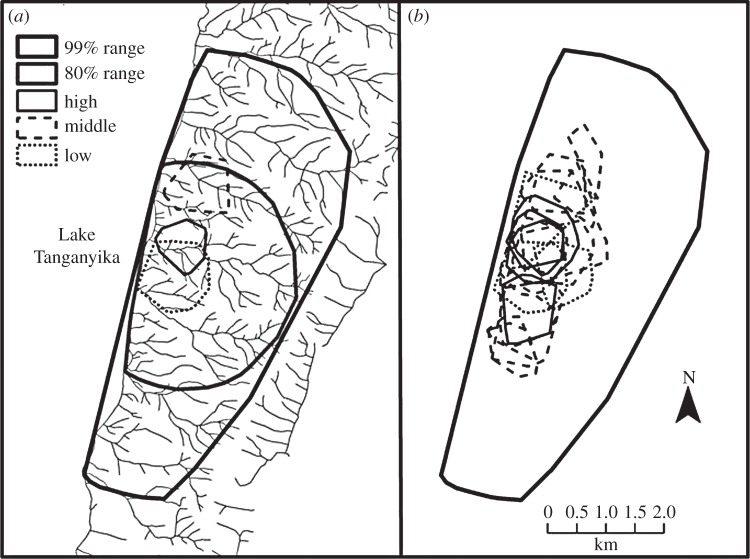Figure 1.
Location of female alone core areas within the Kasekela community range at Gombe National Park, Tanzania. (a) The community range is indicated by minimum convex polygons which enclose 99% and 80% of 15 min locations of all community members observed during daily, day-long focal follows in 2000–2003 (N = 1363 follows). Representative core areas are shown for a high-, middle- and low-ranking female. High-quality resources are concentrated in the valley bottoms along streams while ridges between valleys are of lower quality. Here, the high-ranking female has a small core area centred in a high-quality valley, while the middle- and low-ranking females have larger core areas centred over ridge tops. (b) Core areas of all adult females that were present in the community from 2000 to 2003. Though individual core areas are distinct, they show high degrees of overlap with other community females and most are clustered within the 80% community range. High-ranking females are concentrated in the centre of the range, in an area of high overlap, while lower ranking females settle across the community range. Core areas were calculated from female alone points following Williams et al. [62]. However, for visual purposes, they are depicted here as 50% minimum convex polygons rather than 50% adaptive kernels. Rank was determined from the direction of pant–grunts between dyads during the period. Females with a modified David's score [63] half a standard deviation above or below the mean were classified as high and low, respectively, and the rest as middle-ranking. Data are available through Dryad Digital Repository [64].

